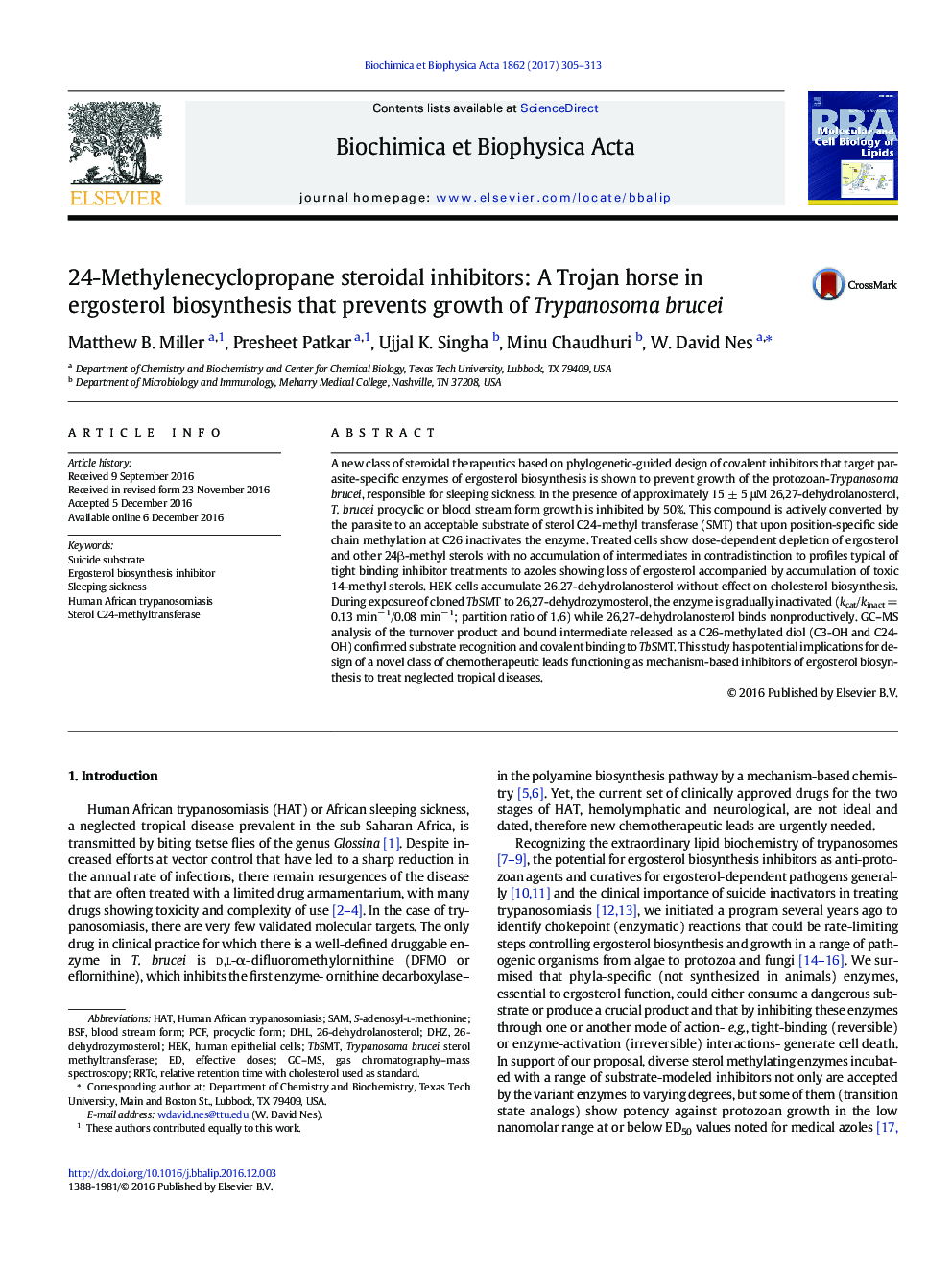| کد مقاله | کد نشریه | سال انتشار | مقاله انگلیسی | نسخه تمام متن |
|---|---|---|---|---|
| 5508287 | 1537693 | 2017 | 9 صفحه PDF | دانلود رایگان |

• A new class of steroidal inhibitors-mechanism-based suicide substrates- to treat sleeping sickness was studied.
• 26,27-Dehydrolanosterol inhibits ergosterol biosynthesis and growth of Trypanosoma brucei.
• 26,27-Dehydrolanosterol is a pro-drug converted in vivo to a suicide substrate of Tb-sterol methyltransferase.
• Kinetic and chemical mechanism of enzymic inactivation by suicide substrate is reported.
A new class of steroidal therapeutics based on phylogenetic-guided design of covalent inhibitors that target parasite-specific enzymes of ergosterol biosynthesis is shown to prevent growth of the protozoan-Trypanosoma brucei, responsible for sleeping sickness. In the presence of approximately 15 ± 5 μM 26,27-dehydrolanosterol, T. brucei procyclic or blood stream form growth is inhibited by 50%. This compound is actively converted by the parasite to an acceptable substrate of sterol C24-methyl transferase (SMT) that upon position-specific side chain methylation at C26 inactivates the enzyme. Treated cells show dose-dependent depletion of ergosterol and other 24β-methyl sterols with no accumulation of intermediates in contradistinction to profiles typical of tight binding inhibitor treatments to azoles showing loss of ergosterol accompanied by accumulation of toxic 14-methyl sterols. HEK cells accumulate 26,27-dehydrolanosterol without effect on cholesterol biosynthesis. During exposure of cloned TbSMT to 26,27-dehydrozymosterol, the enzyme is gradually inactivated (kcat/kinact = 0.13 min− 1/0.08 min− 1; partition ratio of 1.6) while 26,27-dehydrolanosterol binds nonproductively. GC–MS analysis of the turnover product and bound intermediate released as a C26-methylated diol (C3-OH and C24-OH) confirmed substrate recognition and covalent binding to TbSMT. This study has potential implications for design of a novel class of chemotherapeutic leads functioning as mechanism-based inhibitors of ergosterol biosynthesis to treat neglected tropical diseases.
Journal: Biochimica et Biophysica Acta (BBA) - Molecular and Cell Biology of Lipids - Volume 1862, Issue 3, March 2017, Pages 305–313